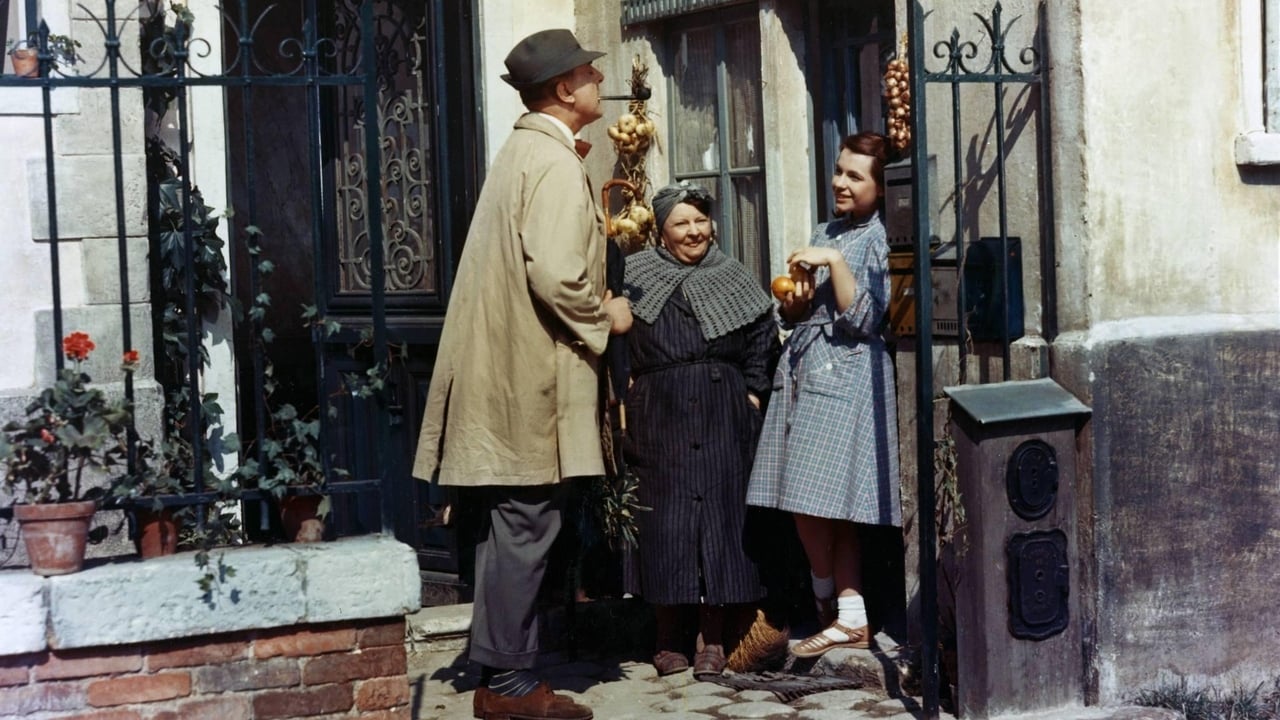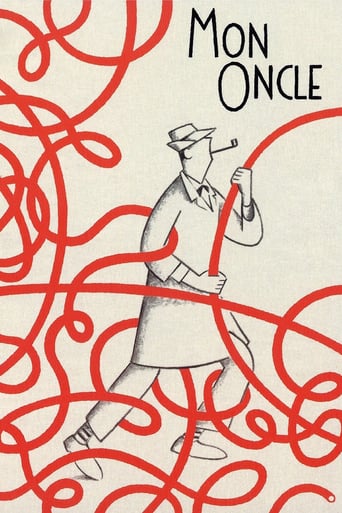

This is my first, and thus far only Tati film. It's cute, clever, and humorous in abundance. Did I bust a gut during this film, no, but that does not in any way deny that it is humorous throughout. Other than a comedy it's hard to classify Mon Oncle. It has elements of slapstick, satire, parody, social commentary to name just a few ingredients, plus some very adept performances. It's very short on dialogue and it will definitely not be everyone's cup of tea, but for me at least it served up and cup full of delights.
... View MoreI know that humor is very personal, of each one. I have seen several films of Jacques Tati and I can not catch the humor. Neither his strange walk nor the gags on which his films are based. I imagine that anyone who likes it, will get caught up with this director, but I ask, Is this a movie or is it a jumble of jokes to fill an hour and a half? Obviously he has to write a script, but that is neither more nor less to have a guide to make his jokes, to my taste bad, by the way. A very psychedelic art direction, for those who like it, like makeup and hairdressing. Some actors to each one more rare. Movement of actors that I, personally I have my doubts that this is sought exactly, but they have a lot of freedom of movement and how it comes out. A camera that always looks in general plane because, What else gives the camera? Total, only serves to narrate. Photography is not worth anything either.In short I have bored a lot, as always I see his art
... View MoreMr. Hulot (director Tati) lives in an old-fashioned and disorganized neighbourhood where people still travel by horse and cart and dogs can roam free on the streets. He frequently pays visits to his sister's family, the Arpels, who live in an ultra-modern urban house where everything is geometrical, empty and pretty uninhabitable. The family's young son Gérard (Alain Bécourt) likes Hulot, but the parents (Jean-Pierre Zola and Adrienne Servantie) insist his carefree lifestyle is not acceptable and try to hook him up with their uptight neighbour (Dominique Marie) and get him a job at a plastic factory, with catastrophic consequences.The comedic genre allows delicious exaggeration of the contrast between the two neighbourhoods. The pacing is slow and the long runtime allows a lot of focus to be put on small details that are often ignored as self-evident: the complexity of modern kitchen appliances, the tap-walking secretary at the factory, the stepping stones on the Arpels' yard, the pedalled lawnmower, the "eyes" of the house... On the other hand, the antics of Gérard's friends in Hulots's neighbourhood are presented as joyful and unpredictable, like tricking passers-by to walk into lampposts or enjoying the aftermaths of fender-benders that never really happened after all. Hulot and the other adults also have time to enjoy themselves by sitting in cafés and chatting with the easily distracted street cleaner.Even though there is a lot of dialogue in some scenes, Hulot stays silent throughout and maintains an unhurried attitude which is the best way to approach the film too. The sets, music, sound effects, props and other details are all carefully designed to fit the style and provide plenty to enjoy for a viewer that doesn't expect to be force-fed jokes every second. Even though at almost two hours Mon oncle may feel unnecessarily long at points, it is ultimately a rewarding experience. Personally I like it more than Mr. Hulot's Holiday (1953), so I recommend giving it a chance even if you're not sure if Tati's calm style is for you. Fans of Rowan Atkinson's Mr. Bean character may also want to check the film out, as Tati's influence on Bean is immense.
... View MoreMon Oncle is about Hulot, an old fashioned gentleman who lives in a bustling old world town. His lively neighborhood is sharply contrasted with the cold, futuristic home his sister lives in with her husband and son. There is practically no exposure to the outside world within the gated courtyard of Hulot's relatives, just the organized efficiency of technological gadgets. The boy can't stand his lifeless surroundings so it's only natural that he prefers to run off with his uncle instead of playing with the expensive toys his father gives him.Hulot's sister isn't satisfied with his impoverished bachelor's lifestyle but her attempts to change it go terribly wrong as the jobs she tries to place him into are in a world of mechanized production (of plastics no less) that he isn't equipped to deal with and the neighbor woman she tries to set him up with is ensconced in a lifestyle even less hospitable than the modern factories. Eventually Hulot's humanity proves to be indomitable and his family finds itself adapting to his needs since he can't be adapted to theirs.At 115 minutes the mostly plot less Mon Oncle proves to be slight and overlong in spite of the general likability of the protagonist. For a film that is ostensibly a comedy the humor is too subtle to keep the film interesting for its entire running time. Still, the soundtrack is delightful and there is enough charm in Mon Oncle to make it a worthwhile experience for patient viewers.
... View More